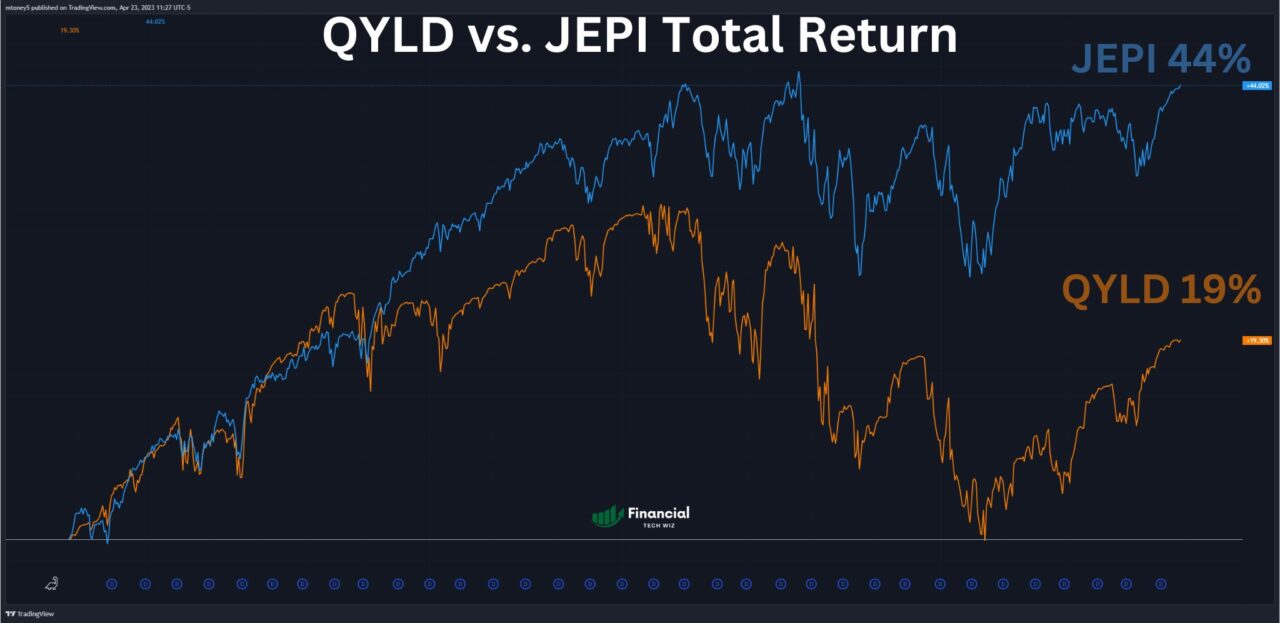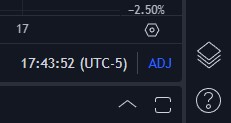QYLD vs. JEPI: Analyzing Two High-Yield ETFs
Exploring QYLD and JEPI ETFs
QYLD and JEPI are both exchange-traded funds (ETFs) that offer investors the opportunity to generate income through dividends and option premiums.
QYLD, the Global X NASDAQ-100 Covered Call ETF, is a passively managed fund that tracks the performance of the CBOE NASDAQ-100 Buy Write V2 Index. Its strategy involves selling covered call options on the NASDAQ-100 Index to enhance income.
JEPI, on the other hand, is the JPMorgan Equity Premium Income ETF—an actively managed fund that targets S&P 500 stocks exhibiting low-volatility and value characteristics. Additionally, JEPI sells options on these stocks to generate an income stream for its investors.

Investment Strategies and Indexes
- QYLD’s Approach: Tracks NASDAQ-100 and sells covered call options
- JEPI’s Approach: Focuses on S&P 500 low-volatility, value stocks, and sells options
Cost and Income Considerations
When comparing the two ETFs, investors should consider the following key metrics:
- Expense Ratios: QYLD has a higher expense ratio (0.60%) compared to JEPI’s lower expense ratio (0.35%).
- Dividend Yields: QYLD’s trailing twelve months dividend yield is around 14.61%, while JEPI’s yield stands at 9.38%.
- QYLD Historical Average Yield: 11.3%
- JEPI Historical Average Yield: 7.75%
Comparing ETFs With TradingView
When comparing ETFs, it is crucial that you are comparing the total return to include dividend payments. TradingView allows you to compare several stocks and ETFs at once on a single chart adjusted for dividends.
You can simply sign up for a free TradingView account and type the stock ticker you want to compare. Next, click the plus sign next to the ticker at the top left of the chart to add symbols to compare.

Finally, ensure you click the ‘ADJ’ at the bottom to adjust the returns for dividends!

As you can see in the TradingView chart below, you can compare multiple funds and ETFs on a single chart, making your research much easier. Feel free to compare any ETFs you’d like using the widget.
Performance and Risk Assessment
Since May 2021, JEPI has outperformed QYLD with a total return of 44%, compared to QYLD’s return of 19%. A closer look at risk and volatility metrics reveals:
- Sharpe Ratios: QYLD has a lower Sharpe Ratio of -0.32, indicating higher risk relative to return, compared to JEPI’s Sharpe Ratio of -0.06.
- Correlation: The two ETFs have a moderate correlation of 0.67, suggesting potential diversification benefits.
- Volatility: QYLD’s volatility is lower (0.99%) than JEPI’s (1.87%), indicating smaller price fluctuations.
TradingView is a powerful and versatile platform that offers users a comprehensive suite of tools to analyze and compare the performance of various financial instruments, including ETFs.
With its intuitive and user-friendly interface, TradingView allows investors to seamlessly compare the total returns of two ETFs over different timeframes, which is extremely helpful for dividend-focused ETFs.
Making an Informed Choice
Both QYLD and JEPI present unique opportunities for investors seeking income and diversification. QYLD’s strategy of selling covered call options on the NASDAQ-100 Index may appeal to investors who seek higher dividend yields and exposure to the technology sector. JEPI’s focus on low-volatility, value stocks in the S&P 500, combined with option selling, makes it a strong contender for risk-conscious investors.
As with any investment, individuals should conduct thorough research and consider their risk tolerance and investment goals before making a decision. Both QYLD and JEPI have shown strong performance, but each has unique characteristics that may align differently with investors’ preferences.
The Financial Tech Wiz ETF Comparison Tool
You can use the ETF comparison tool below to compare over 2,000 ETFs and mutual funds with data I manually collected:
Before you go
If you want to keep educating yourself about personal finance, you must check out these posts as well:
What is the Most Successful Options Strategy
Options Trading for Income: The Complete Guide
Mark Minervini's Trading Strategy: 8 Key Takeaways
The Best Options Trading Books
The Best Laptops and Computers for Trading
How to Get a TradingView Free Trial
The Best TradingView Indicators
This article contains affiliate links I may be compensated for if you click them.
– Free trading journal template & cheat sheet PDFs
– Access our custom scanners and watchlists
– Access our free trading course and community!










